Innovation that benefits only the privileged is not progress.
While accountable care organizations helped show that a focus on value was missing from healthcare, new ACO priorities reflect that equity has been missing, too — for providers as well as patients. In its recent Strategy Refresh, the Center for Medicare and Medicaid Innovation noted that its “Medicare-focused models have limited reach to Medicaid beneficiaries and safety net providers.”
CMMI’s new ACO model and planned improvements to existing ones are designed to help more providers reap the benefits of value-based care.
The objectives of accountable care are clear: higher quality at lower costs, involving less waste and a better experience for all. Those outcomes have not fully arrived. CMMI reports that “only six out of more than 50 models launched have generated statistically significant savings to Medicare and to taxpayers” since 2011. The reasons are many but include the need for a new standard of care that:
The pandemic exacerbated these challenges while adding new ones: a much-needed focus on the social determinants of health that dictate 80% of patient outcomes.
While accountable care organizations helped show that a focus on value was missing from healthcare, new ACO priorities reflect that equity has been missing, too — for providers as well as patients. In its recent Strategy Refresh, the Center for Medicare and Medicaid Innovation noted that its “Medicare-focused models have limited reach to Medicaid beneficiaries and safety net providers.”
CMMI’s new ACO model and planned improvements to existing ones are designed to help more providers reap the benefits of value-based care.
If it’s broke, fix it
The objectives of accountable care are clear: higher quality at lower costs, involving less waste and a better experience for all. Those outcomes have not fully arrived. CMMI reports that “only six out of more than 50 models launched have generated statistically significant savings to Medicare and to taxpayers” since 2011. The reasons are many but include the need for a new standard of care that:
- removes barriers;
- targets social determinants of health; and
- prioritizes health equity.
The pandemic exacerbated these challenges while adding new ones: a much-needed focus on the social determinants of health that dictate 80% of patient outcomes.
New incentives and supports to expand participation
CMMI’s Strategy Refresh is a candid assessment of what 10 years of payment reform has achieved and the aspirations it has left on the table. The report identifies the financial and programmatic supports that safety net providers need to be part of equitable accountable care:"The Innovation Center is considering a variety of incentives … such as upfront payments, social risk adjustment, benchmark considerations, and payment incentives for reducing disparities or screening for SDoH and coordinating with community-based organizations to address social needs. Technical assistance may include application support, sharing of best practices for caring for underserved populations, and assistance with screening tools and data collection workflows."
The health equity expectation
These new commitments span CMMI and CMS models — from the Medicare Shared Savings Program to ACO REACH. Their intent is to help nontraditional providers participate in incentive models that emphasize accountability and health equity along with CMMI’s other objectives: innovation, affordability and partnership.
CMS’s health equity framework raises the stakes for all providers:
CMS’s health equity framework raises the stakes for all providers:
"[T]he attainment of the highest level of health for all people, where everyone has a fair and just opportunity to attain their optimal health regardless of race, ethnicity, disability, sexual orientation, gender identity, socioeconomic status, geography, preferred language, or other factors that affect access to care and health outcomes."
CMMI’s goal is to embed health equity across all models with a focus on safety net populations and the providers who see their struggles."
Equity standards will require a new kind of data strategy and an analytics-forward approach that connects social risk to individualized care plans. CMMI and CMS seek to help providers through learning collaboratives and best practices for accountable care, health equity and financial risk transformation. With this and other data and analytics support, providers who help the underserved may be in a better position to define their destinies.
Analytics-forward for equity progress
CMS’ list of “regardless ofs” represents discrete data points that are notoriously difficult to collect, integrate, assess and activate. This puts providers of all types and sizes in a similar boat, regardless of their quality, savvy and access to SDOH data. Addressing complex SDOH needs is difficult, as is obtaining reimbursement for these efforts. Z Codes offer new potential, but the industry is a long way from the standardizations that help make a service and revenue difference.Equity standards will require a new kind of data strategy and an analytics-forward approach that connects social risk to individualized care plans. CMMI and CMS seek to help providers through learning collaboratives and best practices for accountable care, health equity and financial risk transformation. With this and other data and analytics support, providers who help the underserved may be in a better position to define their destinies.


Comments
Post a Comment